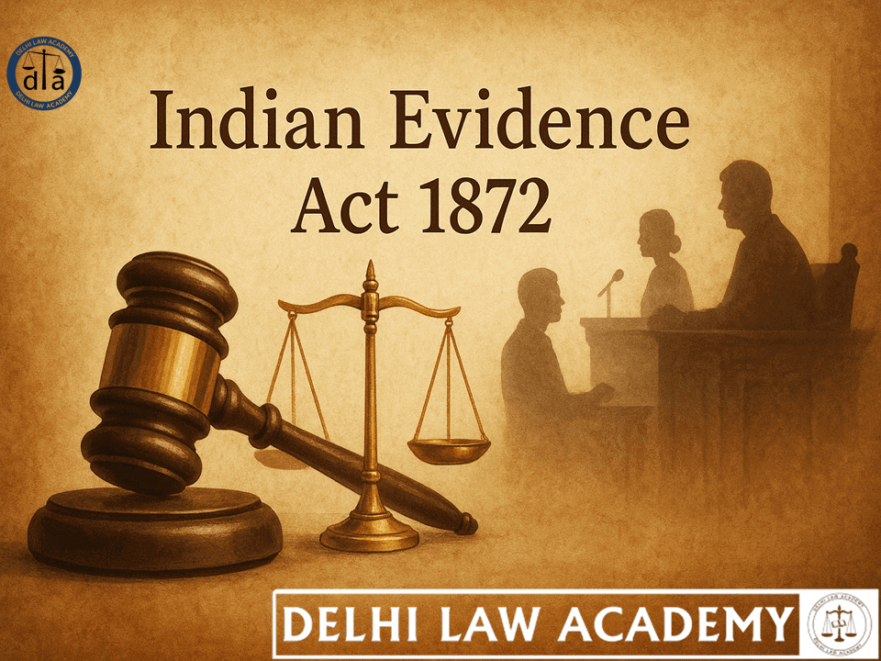
📖 A Note on Section 32 of the Evidence Act – Dying Declarations & Key Supreme Court Judgments
⚖️ The Indian Evidence Act, 1872: Section 30
Confession affecting others jointly under trial
- When more persons than one are being tried jointly for the same offence and a confession made by one of them affecting himself and some others is proved, Court may take into consideration such confession as against such other persons as well as against the person making it.
📌 Illustration (a)
A and B are jointly tried for murder of C. It is proved that A said, “B and I murdered C”. Court may consider the effect of this confession as against B.
📌 Illustration (b)
A is on his trial for murder of C. There is evidence to show that C was murdered by A and B and B said—”A and I murdered C”.
This statement may not be taken into consideration against A as B is not being jointly tried.
📝 Section 31 – Admission not conclusive proof but may estop
Admissions are not conclusive proof of the matters admitted but they may operate as estoppels under provisions hereinafter contained.
Estoppel is a judicial device whereby a court may prevent or “estop” a person from making assertions or from going back on his word.
💀 Section 32 – Dying Declarations
Statement by person who is dead or cannot be found
Statements, written or verbal, on relevant facts made by a person:
- who is dead
- who cannot be found
- who has become incapable of giving evidence
- whose attendance cannot be procured without unreasonable delay or expenses
are themselves relevant facts in the following cases…
☠️ (1) When it relates to cause of death
When the statement is made by a person:
- as to the cause of his death
- as to any circumstances of the transaction which resulted in his death
in cases in which the cause of that person’s death comes into question.
❓ Q. What is the rationale behind this provision?
Supreme Court in Sudhakar v. State of Maharashtra [2000 SC]
- Due weight is required to be given to a dying declaration keeping in view the legal maxim nemo moriturus praesumitur mentiri i.e. a man will not meet his maker with a lie in his mouth.
📖 Case Study: Khushal Rao v. State of Bombay [1958 SC]
- This provision has been made as a matter of sheer necessity, by way of an exception to the general rule that hearsay is no evidence and that evidence which has not been tested by cross-examination is not admissible.
- The purpose of cross-examination is to test the veracity of the statements made by a witness. That test is supplied by the solemn occasion when it was made, namely, at a time when the person making the statement was in danger of losing his life. At such a serious and solemn moment, that person is not expected to tell lies.
- As distinguished from the English law, Section 32 does not require that such a statement should have been made in expectation of death. Such statements are relevant whether the person who made them was or was not under expectation of death at the time when they were made.
- In order to pass the test of reliability, a dying declaration has to be subjected to very close scrutiny, keeping in view the fact that the statement has been made in the absence of the accused who had no opportunity of testing its veracity by cross-examination.
❓ Q. Can it be said that a dying declaration cannot form the sole basis of conviction unless it is corroborated?
Ans: It cannot be laid down as an absolute rule of law that a dying declaration cannot form the sole basis of conviction unless it is corroborated. Each case must be determined on its own facts keeping in view the circumstances in which the dying declaration was made.
❓ Q. Is a dying declaration a weaker kind of evidence than other pieces of evidence?
Ans: It cannot be laid down as a general proposition that a dying declaration is a weaker kind of evidence than other pieces of evidence. A dying declaration stands on the same footing as another piece of evidence and has to be judged with reference to the principles governing weighing of evidence.
👉 A dying declaration which has been recorded by a competent Magistrate in proper manner, in the form of questions and answers, and in the words of the maker of the declaration, stands on a much higher footing.
🔎 Factors for Testing Reliability of a Dying Declaration
In order to test reliability of a dying declaration, court has to keep in view circumstances like the opportunity of the dying man for observation. For example:
- whether there was sufficient light if the crime was committed at night
- whether the capacity of the man to remember the facts stated had not been impaired at the time he was making the statement
- whether the statement has been consistent throughout if he had several opportunities of making a dying declaration
- whether the statement had been made at the earliest opportunity and was not the result of tutoring by interested parties
📚 Continue Your Evidence Act Preparation
Don’t stop here! Strengthen your knowledge of the Evidence Act with our other fully solved tests:
📘 Free Study Material for Judiciary Aspirants!
Download our FREE study material prepared by Delhi Law Academy’s expert faculty.
❓ FAQs on Section 27 of the Evidence Act
Section 27 allows only that portion of information received from an accused in police custody to be admissible which distinctly relates to a discovered fact. This acts as a limited exception to the bar imposed by Sections 25 and 26 of the Evidence Act.
The Privy Council in Pulukuri Kotayya v. Emperor clarified that the “fact discovered” is not merely the object produced but also includes the place of discovery and the accused’s knowledge about it. Statements beyond that are inadmissible.
The fact discovered embraces the place where the object was found and the accused’s knowledge of it. For example, if an accused says “I hid a knife in my roof,” the fact discovered is the concealment of the knife in the roof to his knowledge, not the history of its use.
No. Statements such as “I stabbed A with this knife” are inadmissible since they relate to the past use of the object, not its discovery. Only the part about concealment or location of the weapon can be proved.
Sections 25 and 26 bar confessions made to police or while in police custody. Section 27 partially lifts this ban by allowing discovery-related facts to be proved. However, Section 24 excludes confessions made under inducement, threat, or promise.
No. Evidence under Section 27 is only one link in the chain of proof. Conviction cannot rest solely on it—it must be supported by other admissible evidence presented in court.
Contact us
📍 Delhi Law Academy – Jaipur Branch
6C, Tower 2, Coaching Hub, Pratap Nagar, Jaipur – 302033
📞 Phone:
+91 9911916552
+91 8447285606
✉️ Email:
contactus@delhilawacademy.com

